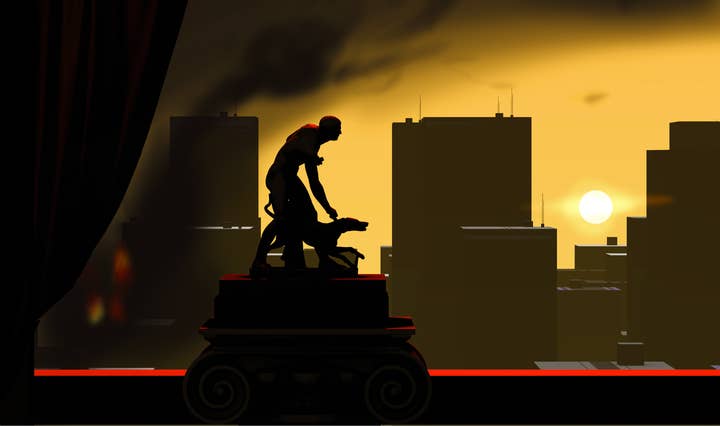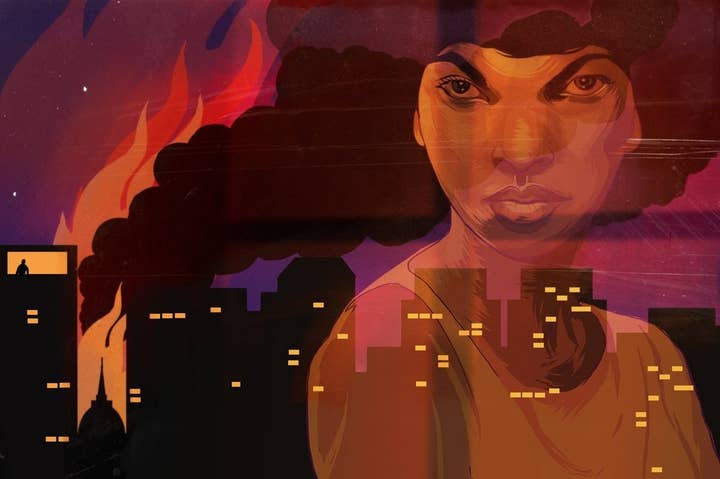Tale of Tales: Making a game for gamers
After a decade of testing the limits, Sunset shows the Belgian indie developer thinking about its audience in a different way
I knew I was done with reviewing games on the day that I was asked to put a score on Tale of Tales' Fatale. At that point, more than five years ago, it was difficult to find anything that showed such disregard for conventional ideas about form and structure. Today, innovative works like Gone Home and Papers Please can find both popular appeal and artistic recognition from august cultural institutions. One wonders how they might have fared in the relatively harsh climate of 2008.
And Fatale was perhaps the most esoteric and ambiguous project from a studio that I knew to be pushing at those boundaries. Essentially a single, densely detailed location based on Oscar Wilde's scandalous 19th Century play Salome, Fatale was like nothing I had ever been asked to review. Did it really have a place on the same scale as FIFA and Call of Duty? Better than Wheelman, worse than Brutal Legend? The existence of games like Jason Rohrer's Passage and Rod Humble's The Marriage, and the commercial success of Braid and World of Goo, indicated that the industry was heading in a tantalising new direction. Wherever that was, I didn't want to be plastering it with 6.7 out of 10.
"Anyone can make a game. Making a game that's good, making the game you want to make, that's something else"
Of course, not everyone warmed to Tale of Tales. Even as the indie scene blossomed and grew, its work seemed to stay a step or two outside of the pack, always willing to challenge its audience, always leaving a few frustrated. Perhaps that's why it feels so strange to meet them in the context of GDC Europe, an environment that seems increasingly dominated by talk of revenue models, data and metrics.
"Some millionaire who's gonna tell you how they made their millions and how you can too," says Auriea Harvey, who founded Tale of Tales with MIchael Samyn in Ghent, Belgium. "No thank you."
We're on the far side of GDC's halfway point and Harvey and Samyn have scarcely even looked at the session schedule. The discussion tends to be dominated by business and logistics, often at the expense of design and art.
"And also philosophically," says Samyn. "What are your aims as a creative person? We talk to a lot of creative people in the industry who have a very engineering-focused approach, like they're just making an object that has a certain function. Those people could use a conference more about the art."

At times, the games industry can seem like a particularly hostile landscape for this kind of thinking. With so much competition and so many platforms and so much downward pressure on prices, it's no wonder that conferences like GDC Europe have swayed further towards metrics and money. The market for indie games may have exploded since Tale of Tales first started to make waves, but it's still difficult to place the studio's body of work anywhere other than a niche within a niche. At this, Harvey just smiles.
"Anyone can make a game," she says. "Making a game that's good, making the game you want to make, or one that affects people in a certain way, that's something else. The problem with games is that every time you do that it's completely different. It's not like the piano, where you have a certain number of keys in a certain configuration. With games it's like the piano only has five keys this time, or the piano is circular this time, because Microsoft just changed its technology. It becomes a challenge to just play the same thing."
"We had a motto: we make games for non gamers, and we were proud of that. We were trying to break things open"
And few people could accuse Tale of Tales of returning to the same song. Samyn and Harvey's work is literate, diverse and heady - a rare mix in gaming even now - but their next project will display a marked change in attitude. Samyn tells me that the 2012 release, Bientôt l'été, caused its audience to "freak out." Tale of Tales had come to accept that some people would feel alienated by what they did, and a few would even respond with anger and hostility, but the language people used when voicing their concerns over Bientôt l'été was striking. It was the very same language he and Harvey might use to describe contemporary art in contemporary museums - something for which Harvey and Samyn admit very little affection.
"I thought, 'Are we those people?' Have we become like those artists?'" Samyn says. "I mean, we really don't want to be like those artists.
"Artists have a responsibility to share their ideas with people. There should be a certain educational aspect to it. For your own growth, sometimes you have to say, 'I'm not going to care about what people think. I'm going to make this the way I feel it should be.' But for us, we realise that we're making games. It's an accessible medium, and maybe we could do our best and make an extra effort to get closer to that.
"In the past, we had a motto: we make games for non gamers, and we were proud of that. We were trying to break things open. But, as it turns out, these non gamers actually don't play games." Samyn laughs. "That was a disappointment for us, in a way, but there are a lot of gamers now who will play games that aren't traditional or conventional. Our next game is really the first time we decided to make a game for gamers. It's for people who are comfortable with the medium."
"We realised that we're always sort of ahead of things," Harvey adds, as if to nail down the point. "In a bad way."
"Sunset is really the first time we decided to make a game for gamers. It's for people who are comfortable with the medium"
This is a bold admission for any studio. Ten years ago, properly addressing the market would have required too great a compromise for the kind of experiences Samyn and Harvey wanted to make, but they both recognise that times have changed. Tale of Tales' games have always required the player to fully engage for the best possible return, to meet the game in the middle. Now, with Sunset, Tale of Tales is taking a few extra steps to meet the player.
Though the idea for Sunset first began taking shape almost a decade ago, Sunset seems like a perfect fit for the times. Harvey is cagey about the details - "I don't want to make 'the Molyneux mistake'" - but here's what we do know: the player assumes control of Angela Barnes, an African American woman working as a housekeeper for Gabriel Ortega, a wealthy, influential man in an unnamed communist country in South America. It will be a period piece, set in the early Seventies, and its multilayered story will allow for romance, revolution and political intrigue, all based on the choices the player makes and the secrets they discover in the hour of every day that they are free to explore Ortega's apartment.
Sunset will be about race, gender and interventionist politics, told entirely through observation and exploration, in a similar fashion to Gone Home. The press, I tell Harvey and Samyn, will eat it up with a spoon.

"We want to connect with that spirit from the Sixties and Seventies of the desire for change, and the belief that things can be changed," Samyn says, drawing a parallel between the imagined world of Sunset and political struggles playing out around the world today. "Communism was something that you could be proud of as an intellectual, something you could fight for, very radical. We feel that's missing now. We want to put that in people's minds. We can be active. We can do things."
"We're still expecting players to meet us halfway," Harvey adds. "We don't have some didactic mission to make people see a certain point of view. We want people to either reinforce or end up contradicting what's already inside them.
"People recognise that we've been doing this for ten years. That's nice. People believe in us"
"We use our games as tools to think about the world. If the world is the way it is - war and strife everywhere - then this is a good tool to have right now. Those characters in that situation is a good way of meditating on that, and we're trying to put it forth in a way where we won't be ahead of our audience. I don't mean that as a humble brag. We want to be there with you this time."
And this time there is all the more reason to feel confident, because Sunset also marks Tale of Tales first experiment with crowdfunding. It was a success, the game cruising past its relatively modest $25,000 target in the early going. Never the types to wring every last cent out of any given situation, Harvey and Samyn set a single, suitably esoteric stretch goal: the chance to actually see the character of Angela Barnes in mirrors and reflective surfaces as she explores the house.
Ultimately, Sunset finished with almost triple the amount it set out to raise, giving Harvey and Samyn the opportunity to recruit the largest and most talented team of freelancers they have ever worked with on a single project. Harvey describes the Kickstarter experience as, "both not as bad and ten times worse than I thought it was going to be," but it proved that, over the years, Tale of Tales' work has built a following, even if they feared it was leaving us in the dark.
"We have a lot of supporters for what we do," Harvey nods. "People recognise that we've been doing this for ten years, and that we've made eight games already. That's nice. People believe in us.
"I found that surprising, and rather lovely."

